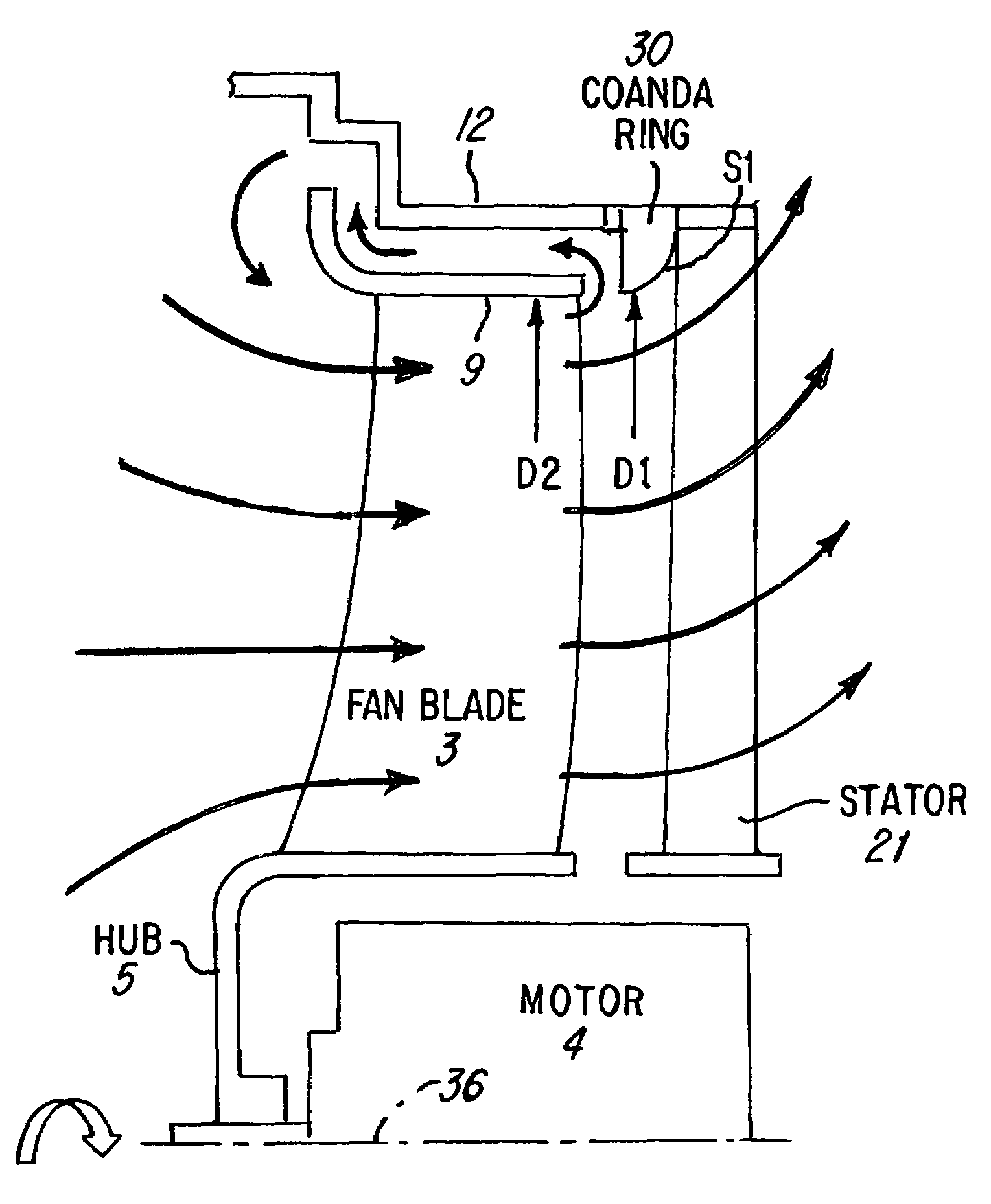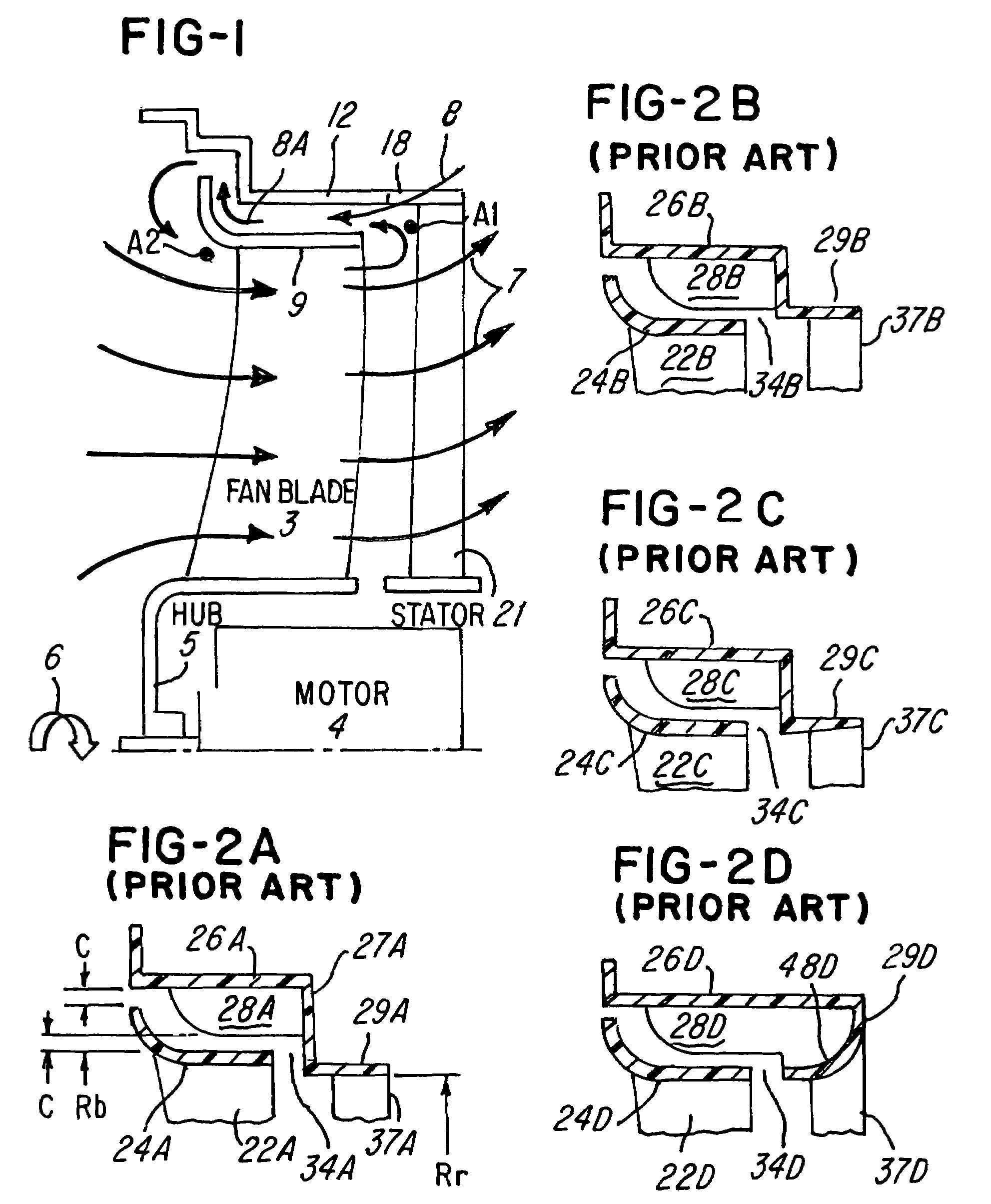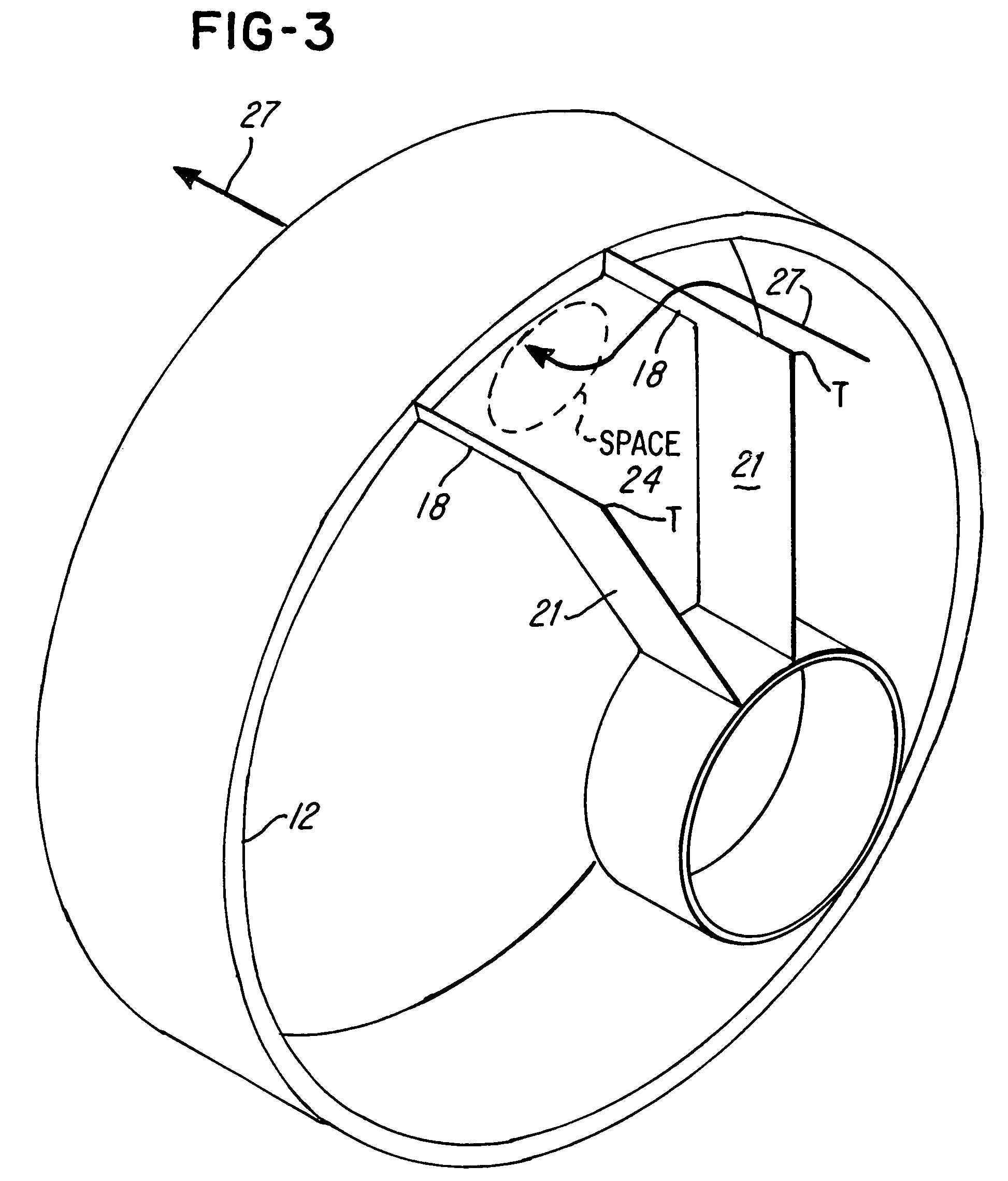Cooling fan using Coanda effect to reduce recirculation
a cooling fan and coanda technology, applied in the direction of machines/engines, stators, liquid fuel engines, etc., can solve the problems of no work or other useful function being accomplished, leakage represents a loss of efficiency, etc., and achieve the effect of reducing the tendency of exhaus
- Summary
- Abstract
- Description
- Claims
- Application Information
AI Technical Summary
Benefits of technology
Problems solved by technology
Method used
Image
Examples
Embodiment Construction
[0032]FIG. 4 is a cross-sectional view of one form of the invention, wherein an annular ring 30, termed a Coanda ring, is stationed downstream of the fan ring 9, and upstream of stator 21. The fan ring 9 is a ring which connects the tips of neighboring fan blades.
[0033]The inner diameter D1 of the Coanda ring 30 is equal to the inner diameter D2 of the fan ring 9. Further, as shown in FIG. 5, the inner surface 33 of the Coanda ring 30, at the point P1 where fan exhaust enters the Coanda ring 30, is tangent to the fan airflow 34. The inner surface 33 of the Coanda ring 30 then curves away from the central axis 36 in FIG. 4 of the fan, acting somewhat as a diffuser, but while maintaining attached flow along the Coanda ring 30, as discussed later.
[0034]The Coanda ring 30 utilizes the Coanda effect. The Coanda effect can be easily demonstrated, using an ordinary water faucet and a water glass, held horizontally, both shown in FIGS. 6A and 6B. On the left side of FIG. 6A, the water glass...
PUM
 Login to View More
Login to View More Abstract
Description
Claims
Application Information
 Login to View More
Login to View More - R&D
- Intellectual Property
- Life Sciences
- Materials
- Tech Scout
- Unparalleled Data Quality
- Higher Quality Content
- 60% Fewer Hallucinations
Browse by: Latest US Patents, China's latest patents, Technical Efficacy Thesaurus, Application Domain, Technology Topic, Popular Technical Reports.
© 2025 PatSnap. All rights reserved.Legal|Privacy policy|Modern Slavery Act Transparency Statement|Sitemap|About US| Contact US: help@patsnap.com



